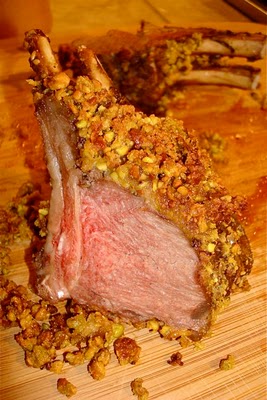
Costata d’agnello incrostato con pistacchio
Con una glassa de melagrana
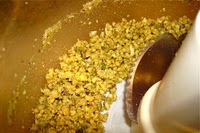
Pistachios and panko bread crumbs are ground in the food processor with salt, pepper, and olive oil to get the right consistency for encrusting the meat.
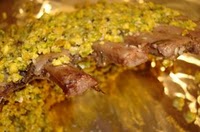
The lamb rack is seasoned then encrusted and baked at 350 for about 25 – 30 minutes. This lamb is cooked to medium, adjust cooking time to your temperature preference, then let the lamb rest.
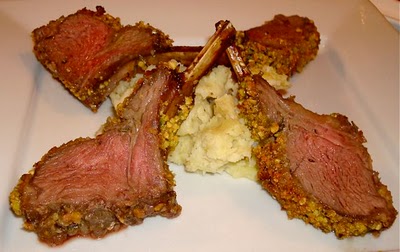
The chops are sliced and served here with mashed potatoes. Drizzle the tangy warm pomegranate glaze over the meat.
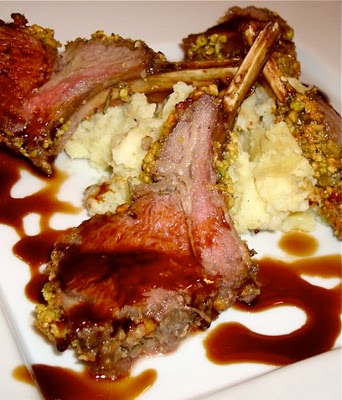
On Lamb, Pistachio, and Pomegranate in Italy:
Easter Nears, And That Means…
Lamb in Italy: It’s the one thing you can be almost certain to find on the table come Easter Sunday.
Emperor Vitellius brought the pistachio to Rome in A.D. 50. He would finish off his meal by stuffing his mouth full of pistachios. Pistachios are currently cultivated as a commercial crop Italy.
The pomegranate made its way to Italy via Carthage (Punic), and therein lies the root of its Latin name, Punicum malum (apple). Its current botanical name is Punicum granatum with Punicum recognizing Carthage as a focal point for pomegranate cultivation and granatum referring to the many seeds or grains in the fruit. Many Italian Renaissance fabrics boasted the pattern of cut pomegranates. Ancient Romans not only enjoyed the succulent flesh of this fruit, they also tanned and used the rinds as a form of leather.
Festa Italiana:

As much as I love to cook Italian food, I am, alas, not of Italian decent. And I was wondering what to bring to a virtual Italian festival?
I have no lovely memories of Italian childhood dishes. Mom, I remember your Creamette’s Brand Elbow Macaroni with Margarine and torn slices of melting American Cheese was actually pretty good…but, not quite the same as, say, Simona’s
Pasta al Burro e Parmigiano.
So…I decided to make my own recipe, with ingredients that are possibly used in the Italian kitchen. Here it is: This is my contribution to the table at the upcoming
FESTA ITALIANA hosted by Maryann of
Finding La Dolce Vita and Marie of
Proud Italian Cook.Grazie Molto! Thanks for inviting me 🙂
Happy to help clean up!
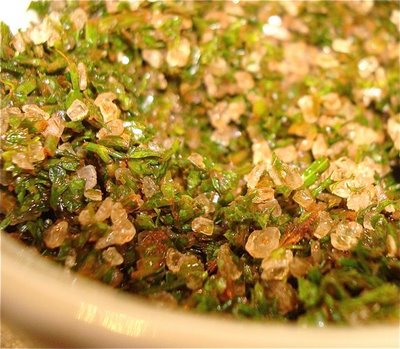 The herbed salt looked like little jewels, watermelon tourmaline crystals to be exact. Beautiful!
The herbed salt looked like little jewels, watermelon tourmaline crystals to be exact. Beautiful!
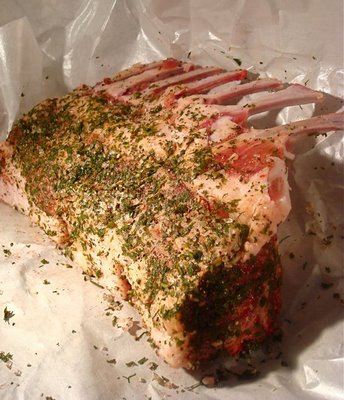

 The herbed salt looked like little jewels, watermelon tourmaline crystals to be exact. Beautiful!
The herbed salt looked like little jewels, watermelon tourmaline crystals to be exact. Beautiful!





